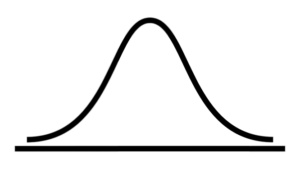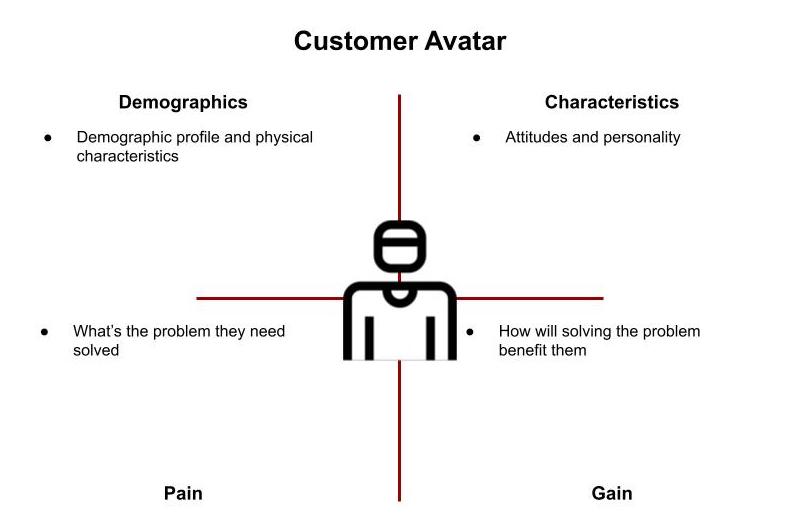Why it’s Important and How to Use It
Every customer has a journey. Mapping the customer journey and really understanding all its nuances can make the difference between ho-hum sales and OMG sales. This post will discuss how customers’ interest is a key component of their journey. How connecting messaging to interest gently draws customers through the marketing funnel and sets up the sales funnel for maximum ROI. Finally, we’ll look at how mapping the digital customer journey sets your business up for long-term relationships with customers.
Mapping the customer journey is valid and useful for B2C marketing, but where it really comes into its own is B2B marketing. B2B is also where the customer journey is frequently given short shrift. B2B organizations often place all their emphasis and therefore resources on Sales. If due consideration is given to the entire customer journey, the right customers will be acquired for the right reasons, and over time investments made in relationship marketing will pay off.
Understanding the Customer Interest Curve

A customer’s interest in a product or service isn’t in a steady state. Nor is it off and on. Most of the time, they have no interest in the category. They don’t have a problem that needs to be solved. Or their needs are being solved satisfactorily. At this stage, it’s important to recognize that all the marketing in the world isn’t going to reach them. Your messages are lost in the wash of marketing noise they experience daily. Sorry. It’s true, so don’t waste your time and budget trying to push this stone up the hill.
But, when their situation changes, when they identify a need or wish to reconsider their choices, their interest begins to climb. Now they start seeing marketing, yours and your competition’s. Now’s the time to begin the engagement. But understand where they are in their journey. It’s still early days. They are in information-gathering mode, and a hard sell now will just turn them away.
The technical label for this stage is Consideration. They are exploring their choices and weighing their options.
As the journey progresses, their interest increases and they enter the next stage of their journey. This is the Prospecting stage. It’s time to make a choice from the two or three options they’ve identified. Their interest in the category is high; they are hypersensitive to marketing and are looking for a solution that will solve their problem. The PAS formula is very effective at this time. Lead with the problem you are solving, agitate the problem, and then present a solution. Use your features and attributes as reasons to believe. Provide social proof like testimonials, brands who are your customers, credentials, etc.; give them the answers to their questions.
BAM!
The sale is made!
Let’s go home.
Nope, your job isn’t done; it’s just starting.
The most important purchase isn’t the first purchase it’s the second purchase. Why? Because once the customer has bought from you a second time, the chances that they’ll buy from you again improve exponentially.
Pro Tip
The second relationship marketing principle: The most crucial time is the beginning.
Reassure your new customers that they’ve made a great choice and that you value their business.
The first purchase is at the top of the interest curve, but their interest doesn’t drop off immediately. They are still hyper-aware of advertising. They want to know that they’ve made a good decision and that their business is valued. Now is the time to establish a relationship that goes beyond your product’s or service’s functional and transactional benefits. Their interest is still high, so they’re open to messages that will achieve this goal.
Don’t miss this opportunity.
Immediately after the purchase, a customer is open to further interactions. Consider a sales funnel.
This is the basis of RFM analysis. It’s a proven fact that the customer who buys from you most recently, buys from you most frequently, and spends the most money with you is the customer most likely to buy again.
Make it easy to interact with you.
Have email automation in place that adds value and encourages further interaction.
Trust is built over time.
Have a lazy river email sequence in place that consistently delivers value to your customers. When they interact, click on a link, or open it for the first time in a while, you should have email automation in place that encourages further interaction. Their interaction tells you that their needs have changed, their interest is rising, and they are entering the consideration phase again. Be there to help them.
How Mapping the Customer Journey Makes Funnels Better
As you can see, the customer journey is dynamic on several levels.
There’s an increase in their level of interest over time. Interest increases as they get closer to the initial purchase. Interest decreases post-purchase but not instantly.
There are also changes in their needs over time. From no interest to consideration, prospecting, the purchase, followed by confirmation, nurture and sustain.
Marketing funnels adjust their tactics, messages, and offers to match both of these factors.
Top-of-funnel tactics will be designed to attract interested prospects. Mid-funnel tactics are designed to engage and generate micro-transactions of increasing value. Use the mid-funnel to establish “know like and trust.”
The more you understand the nature of the journey, the better your funnel will perform.
This is mutually beneficial. Your funnel is attracting and engaging the right customers for the right reasons. (The first relationship marketing principle is, “Attract the right customers for the right reasons.”) You are supporting and adding value to their journey. This maximizes the chances that you can convert new customers into loyal customers.
The Customer Avatar

The process starts with the customer avatar. This device lets you describe your customers in terms of their demographics, what they look like, their characteristics, how they think, their pain, the problem they are trying to solve, and their gain, how your product or service solves their problem.
This simple idea will have a profound impact on the effectiveness of your marketing. It’s also, more often than not, skipped. Huge mistake. Take the time to carefully and thoroughly describe your best customers.
For example, demographics can help you select the best media to reach your customers. If they are older, don’t put your energy into TikTok, regardless of what your nephew says. Their characteristics can help you determine the best style for your advertising. If they are skeptical, then a more rational approach may be appropriate. Their pain tells you what problems should be emphasized. You always want your messaging and offer to be outside in; start with their problem, agitate it, and then solve it.
The Customer Journey
Once you understand who your customer is it’s time to map their journey. Describe their needs as sections in the journey. Write down all the questions they might have as best you can, and determine when in their journey they are likely to have the questions. This will help you determine the best messaging and offers for each stage in the journey. Your goal is to bring them along. Don’t fight their reality. Going directly from “Hi, my name is…” to “your place, or mine?” is not a good idea.
Recognize that the first purchase isn’t the end of the journey. It’s generally two-thirds of the way along the path. You want tactics to confirm that they’ve made a great choice and that you value their business. You want to nurture the relationship with valuable additional information or content. Avoid the hard sell. Talk to your customers like you have a relationship with them because they think you do.
This doesn’t mean you shouldn’t tell them about your other products and services. You certainly can and should. But it does suggest that there’s a right way to do this. Look for signals that tell you they are interested. Develop messaging that addresses the questions they are likely to have at each stage of their journey. Support them, and your sales message becomes a relationship-building message. You know them, and they know you. It’s a commercial relationship based on mutual value. When done well, your customers will believe that they’ll gain value from your other products or services.
Building Marketing Funnels

Now that you understand the customer and their journey, it’s time to apply this information to your marketing funnel. Your goal is efficient sales. Your customer’s goal is to solve their problem. Design your funnel with both goals in mind. A funnel that recognizes and supports the customer journey will generate mutual value.
Craft your top-of-funnel offers to attract prime prospects. Mid-funnel tactics should be crafted to generate micro-transactions of increasing value. This builds the know-like-and-trust factor. Then you can close the sale positively, which sets you up for a long relationship.
The First Purchase Isn’t the Most Important Purchase
People are often surprised when I say this. The most important sale isn’t the first sale; it’s the second.
Why?
If you can get the second sale, the chances of future sales will improve exponentially.
How do you accomplish this?
The second relationship marketing principle is, “The most crucial time is the beginning.” As described above, interest doesn’t vanish with the purchase. It remains high and drops off slowly. Use the post-purchase time to confirm that they’ve made a good choice. In combination with the trust created in the marketing funnel, you can also use this interest to set up a sales funnel that increases your average order size.
The third relationship marketing principle is, “In relationships continually reinforce the decision to buy.”
Nurture the relationship by adding value beyond your product’s or service’s functional benefits. You are trying to build relationship equity, which becomes competitive insulation. It also opens these customers to further messaging from you. Your communication won’t get lost in the digital noise. Your message is seen as valuable information that’s relevant to their situation. It rises above the “sales” noise.
Mapping the Digital Customer Journey – More Efficient Marketing
Mapping and understanding the customer journey leads to more efficient marketing in five ways. It:
- Attracts the right customers for the right reasons
- Builds know, like, and trust through microtransactions of increasing value
- Improves conversion
- Sets up the sales funnel for increased average order size
- Increases customer loyalty, which maximizes ROI
This idea isn’t complicated; it recognizes that consumer interest changes over time and tailors your marketing to what the customers need at each stage. But still, it’s often missed. Craft your marketing with the interest curve and customer journey in mind; you will do better than most of your competitors. You will also attract high-quality customers who will likely stay longer and purchase from you multiple times.
Author: James Hipkin
Since 2010, James Hipkin has built his clients’ businesses with digital marketing. Today, James is passionate about websites and helping the rest of us understand online marketing. His customers value his jargon-free, common-sense approach. “James explains the ins and outs of digital marketing in ways that make sense.”
Use this link to book a meeting time with James.

